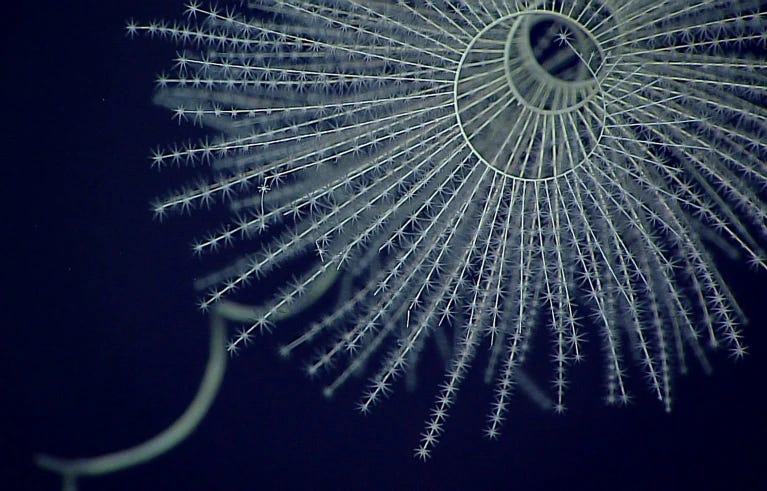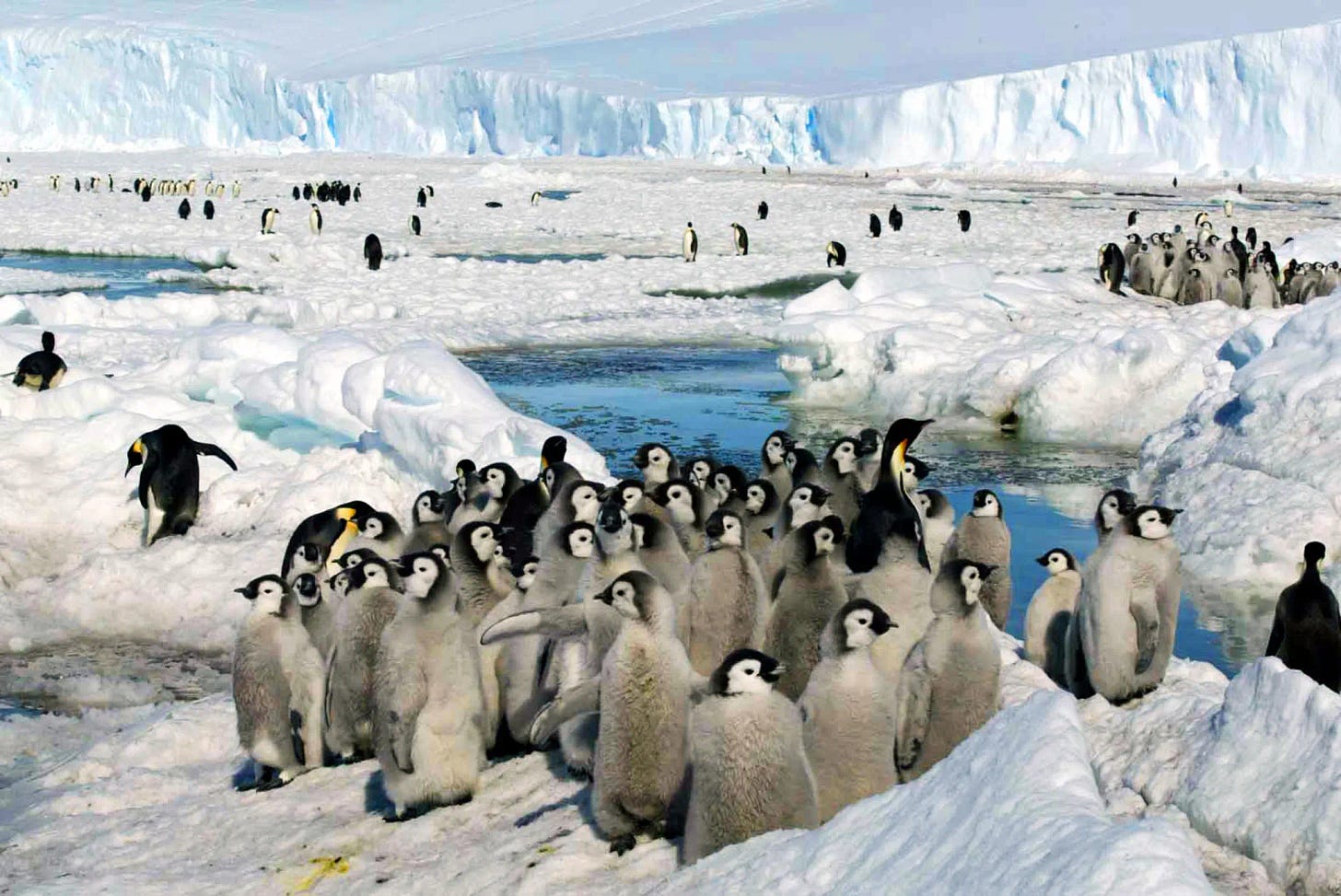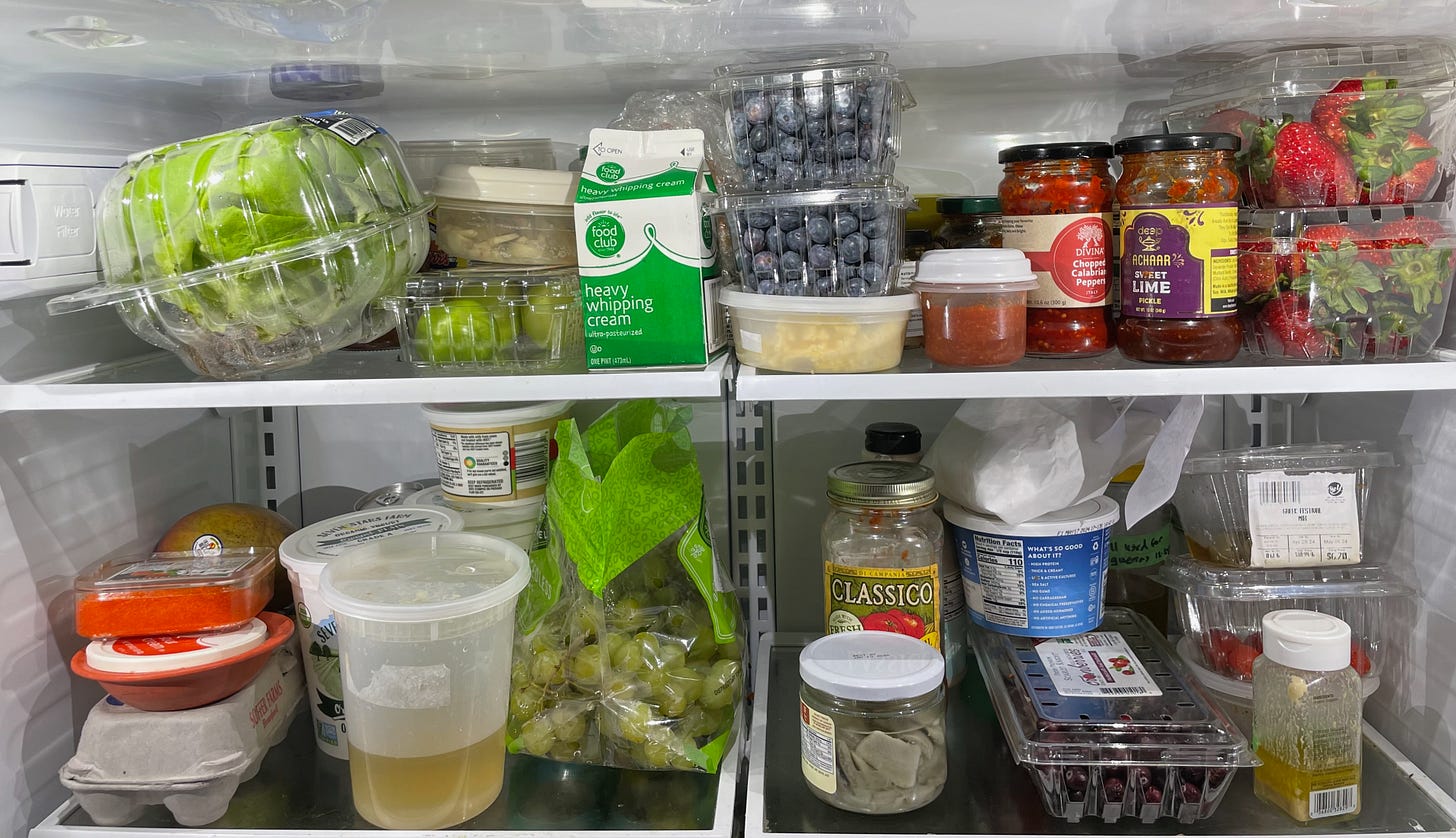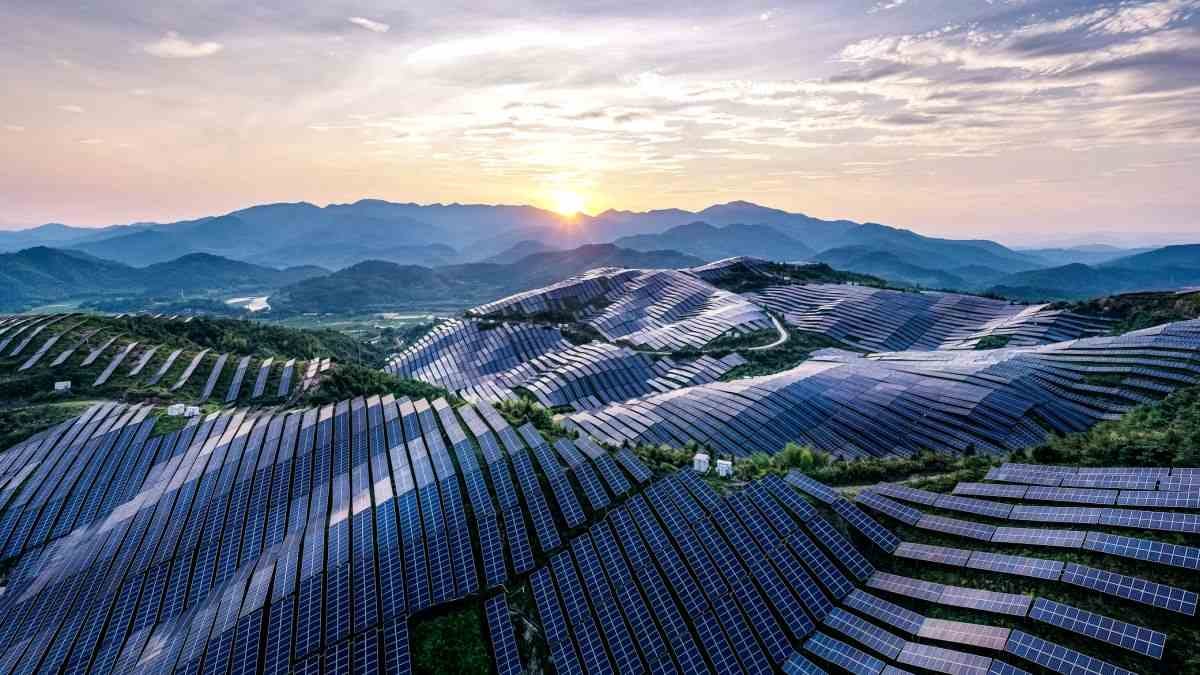THE WEEK IN WILDLIFE
by Richard Conniff
AND THE OCTOCORAL SAID “LET THERE BE LIGHT!”
Animals have been lighting up the oceans for twice as long as scientists thought, back 542 million years to the Cambrian period, according to a new study in Proceedings of the Royal Society B. Octocorals, 3000 species of ‘em, are still with us today, found both in shallow coastal waters and deep oceans, with names like sea pens, sea fans, and sea whips. Most of them produce the enzyme luciferase to cause a chemical reaction that generates light.
The co-authors of the study didn’t come up with the Cambrian timeline based on fossil evidence, which is hard to come by for soft-bodied creatures. Instead, they analyzed a family tree using genetic data from 185 living octocoral species. Based on how closely these species are related, the researchers estimated when their different lineages separated from one another. Then, looking at which of the 185 are currently bioluminescent, and their position in the branching evolutionary tree, they reconstructed the evolutionary history of the trait back to an earliest common ancestor. Oddly, the trait may have originated back then as a “detoxification strategy,” to purge the animal of oxygen or reactive-oxygen species. A bit later, it became a means of communication.
RECORD LOW ICE PUSHES EMPEROR PENGUINS OVER THE EDGE
This sad report comes from Reuters:
Emperors - the world's largest penguin species and one of only two endemic to Antarctica — depend on sea ice firmly attached to the shore to lay their eggs and raise their chicks. If ice breaks up too early, the chicks will be forced to enter the sea before their waterproof feathers have fully come in.
"They'll either freeze to death or they'll drown," said Peter Fretwell, a scientist with the British Antarctic Survey who studies wildlife using satellites.
That happened in 14 of Antarctica's 66 emperor penguin colonies last year as the extent of Antarctic's sea ice shrank to a record low, driven in part by climate change-fuelled heating. Tens of thousands of chicks are likely to have died.
“ONE WORD FOR YOU: PLASTICS”
International negotiators met in Ottawa this week to negotiate a global response to pollution and overproduction of plastics. These plastics are of course everywhere, not just in the environment but in our bodies, “including blood, lungs, placenta and breast milk,” according to an editorial in the science journal Nature Medicine. This line especially put its hooks in me: “One startling study found that infants may be exposed to high levels of microplastics by ingesting formula prepared in propylene feeding bottles.”
Researchers are just starting to figure out the consequences for our health. But they’ve already turned up strong links between MNPs (for micro- and nanoplastics) and the risk of heart attack, stroke, and death:
In samples of atherosclerotic plaques that had been surgically excised from the carotid arteries of 304 people, plastic was detected in plaques from approximately half of this cohort …. Using electron microscopy, the researchers found jagged-edged particles, identified as MNPs, in the plaques. Deposition of plastic in the plaques was strongly associated with the development of subsequent cardiovascular disease: over the course of 34 months, people with evidence of MNPs in their plaques had a 4.5-fold higher risk of a composite endpoint of nonfatal myocardial infarction, nonfatal stroke or death from any cause, relative to the risk for those without such evidence.
Another study found a link between microplastics and inflammatory bowel disease:
The concentration of fecal microplastics was higher in people with inflammatory bowel disease than in healthy people, and the level of fecal microplastics correlated with the severity of the disease.
The editorial carefully describes these results as correlation, not causation. But strong correlations matter, especially when you recall that tobacco and other industries have repeatedly used the ethical and practical impossibility of proving causation in humans to defeat or delay regulation. These correlations also matter for the wildlife around us, with MNPs found, for instance, to be “affecting fish behavioral and neurological functions, intestinal permeability, metabolism, and intestinal microbiome diversity.”
So far, laws aiming to regulate plastic pollution are either nonexistent, or notably lenient:
… the European Union has restricted the intentional addition of microplastics to products and has set a target to reduce microplastics pollution by 30% by 2030.
The UN Environment Assembly, with the support of 175 nations, has set of goal of developing a global plastics treaty by the end of the year. That’s what member nations have been discussing this week in Ottawa. Negotiations will continue in various locations around our plasticized planet through November. Environmental groups are pushing for a cap on overall pollution. Fossil fuel interests would rather talk about “waste management,” widely regarded as a cover for business as usual.
Right now, plastic production is on track to double or triple by 2050, according to a new study from the Lawrence Berkeley National Laboratory. And the world’s worst plastic polluters are all familiar names (some of them might even be in your refrigerator): Coca-Cola, PepsiCo, Nestlé, and Danone.
CHINA TAKES THE LEAD ON RENEWABLE POWER
The United States is vaguely planning to pass peak demand for oil, gas, and coal by 2030. But China is already on track to get there in 2026, according to a new report from the Norwegian conglomerate Det Norske Veritas. It’s racing to build renewable energy sources at home. Wind, for instance, supplied just 1% of total energy consumption in 2010—and 9.4% last year. Solar panels are armor-plating the hillsides. (That has its downside, both visually as the above photo suggests, and for wildlife, which tends to head uphill for refuge as the climate rapidly warms.) Overall, renewable energy provided 30% of the total energy supply last year—and China is aiming to get to 88% by mid-century. In the U.S. meantim, all renewable sources combined provided just 8.8% of energy consumption in 2023, according to a report from the Business Council for Sustainable Energy.







